JTF (just the facts): A total of 17 large scale color photographs, generally framed in black and unmatted, and hung against white walls in the entry area, the main gallery space, and the central back gallery. All of the works are chromogenic prints, made in 2013. The 8 works in the main gallery space are each sized roughly 58×66, and are available in editions of 5+2AP. The 8 works in the central back gallery are each sized roughly 32×25, and are available in editions of 10+2AP. The single work in the entry is sized roughly 31×26, and is available in an edition of 10+2AP. The show also includes an installation of 100 gelatin silver prints in the back rear gallery space. These prints are from a single work/portfolio, made in 1993-2000. Each of the prints are roughly 14×11, and the set is available in an edition of 12+3AP. (Installation shots below.)
Comments/Context: Yasumasa Morimura has spent roughly the past thirty years refining his original brand of performative self portraiture, and his newest show finds him successfully expanding his signature restaging of the masterworks of art history to explore complex layers of twisting perception. While famous images by artists from Manet and Rembrandt to Frida Kahlo and Cindy Sherman have all been memorably repurposed by Morimura over the years, in these works he returns to Diego Velázquez and his 1656 painting Las Meninas, a work he first reenvisioned in 1990.
Straightforward head shot portraits are of course the easiest for Morimura to recreate, which is why Las Meninas provides such an intriguingly complicated platform for his investigations of identity. Velázquez’ painting depicts not only the central figure of the young princess, but also a selection of maids, chaperones, and court members (including a dog), the king and queen reflected in a mirror in the background, another figure in the far background, and the artist himself in front of the hidden canvas. Like an actor playing a variety of roles and characters, Morimura takes on all of these guises at once, multiplying his male Japanese face across the entire spectrum of Spanish sitters.
But what makes this new series of pictures different is not their introduction of multiple figures (Morimura has taken on that challenge with subjects from Goya’s firing squad to angels from the Book of Genesis), but their iterative investigation of space and perception. Las Meninas has multiple planes of action – the princess, her entourage, and the artist in the foreground, additional figures, the mirror reflected royals, and the man in the hallway in the back, and the viewer in front, watching the proceedings (perhaps standing next to the king and queen). Morimura adds to these layers the in situ placement of the painting in the Museo Nacional del Prado in Madrid, with its marble floors and flanking paintings hung in the gallery space. What occurs next is a kind of farcical game of musical chairs, with Morimura as everyone, trying out increasingly puzzling combinations of here and there.
After a scene setting image of the empty gallery space, a pair of works show the artist as himself for the first time – in one, standing and looking at the painting in the gallery, and in the next, as himself in the far background of the painting, with Velázquez’ and his canvas pulled out into the gallery and now facing the assembled group in the painting. The spatial machinations get trickier in an image with the entire group physically in the gallery facing the painting (with Velázquez working on Morimura’s 1990 image of the princess and the original painting now acting like a mirror), and in another where the group has turned and now faces the viewer from the gallery, the painting in the background emptied of its sitters. Soon the king and queen get in on the act (both as themselves and as Morimuras), leaving their flanking canvases and standing in the gallery. In the end, all three paintings are empty – “and then there were none”. A parade of single image Morimura-faced portraits of each of the characters in the series hangs in Luhring Augustine’s back gallery (weighed down by heavy period-style black frames), showing off the artist’s meticulous costuming and staging more readily.
These new images move Morimura beyond his usual investigations of gender, culture, and identity and introduce a reconfiguration of the traditional balance between viewer and viewed. The series (which would make a clever stand alone artist’s book) represents a dance in and out, with participants flowing back and forth between the painting and the “real world”, constantly testing our understanding of which reality we are being shown or are inhabiting. The entire project is a conceptually complex and often mind bending investigation of painterly space, allowing us to step inside a famous artwork and playfully reorient its contents.
Collector’s POV: The works in this show are priced as follows. The large 58×66 prints are $75000 each, while the smaller 32×25 and 31×26 prints are $17000 each. The set of 100 prints in the back is priced at $200000. Morimura’s prints have been intermittently available in the secondary markets in the past decade, with prices ranging from roughly $2000 to $66000.


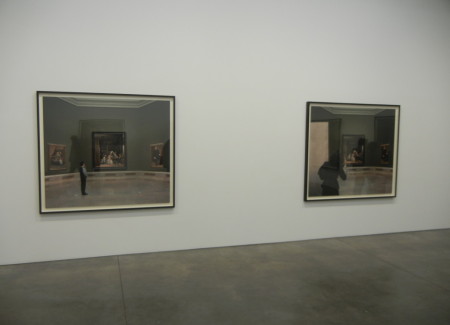

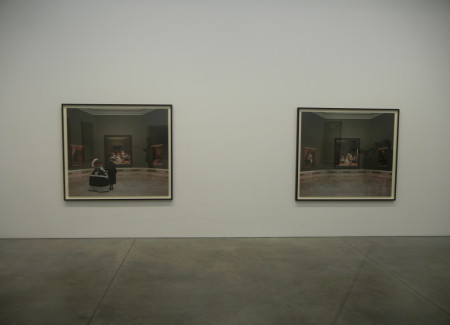

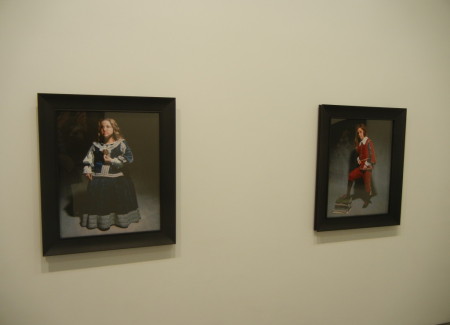
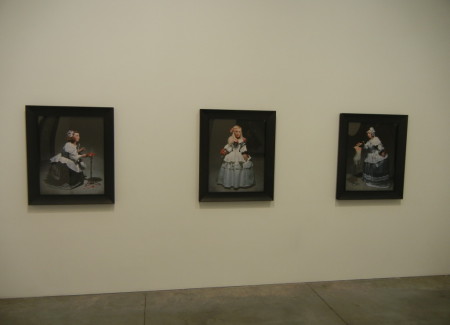
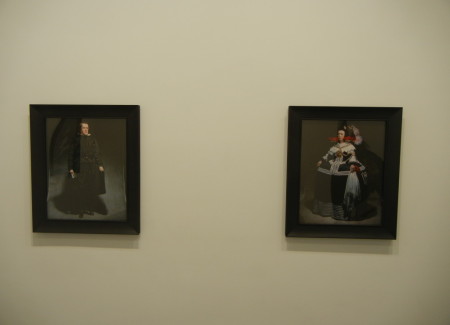
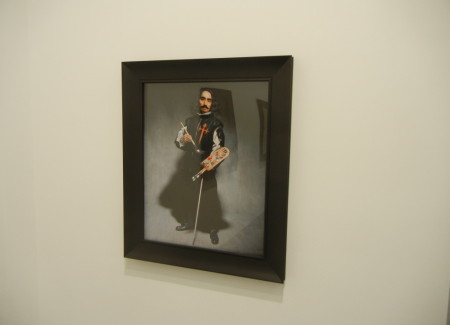






“It just looks stupid when a photograph is framed or backlit and displayed vertically in an exhibition, in the way paintings have traditionally been shown. A photograph in a gallery is a flat, soulless, superficial substitute for painting. Putting up massive prints is a waste of space”.
http://www.theguardian.com/artanddesign/jonathanjonesblog/2014/nov/13/why-photographs-dont-work-in-art-galleries
That from The Guardian art critic Jonathan Jones, writing generally, and as you can see, dismissively, on the subject of ‘art photography’ a few months ago. (The Guardian is a key liberal newspaper in the UK – refer to ‘The Bourne Ultimatum’.)
This anti-art photography attitude prevailed in the UK until very vrecently, it is only in the last few years Tate has begun exhibiting photographs, over-turning long held curator convictions, so it is a bit of a surprise to see it resurface again. Art photography has happened in the US, Germany, France, Japan – Hungary! I dread to think what The Guardian’s art critic would make of Moriyama mucking about with Velázquez. I’d like to think he’d also find it a “conceptually complex and often mind bending investigation of painterly space” but somehow doubt he’d stick around long enough to consider those possibilities.
Sorry – meant to write Morimura not Moriyama